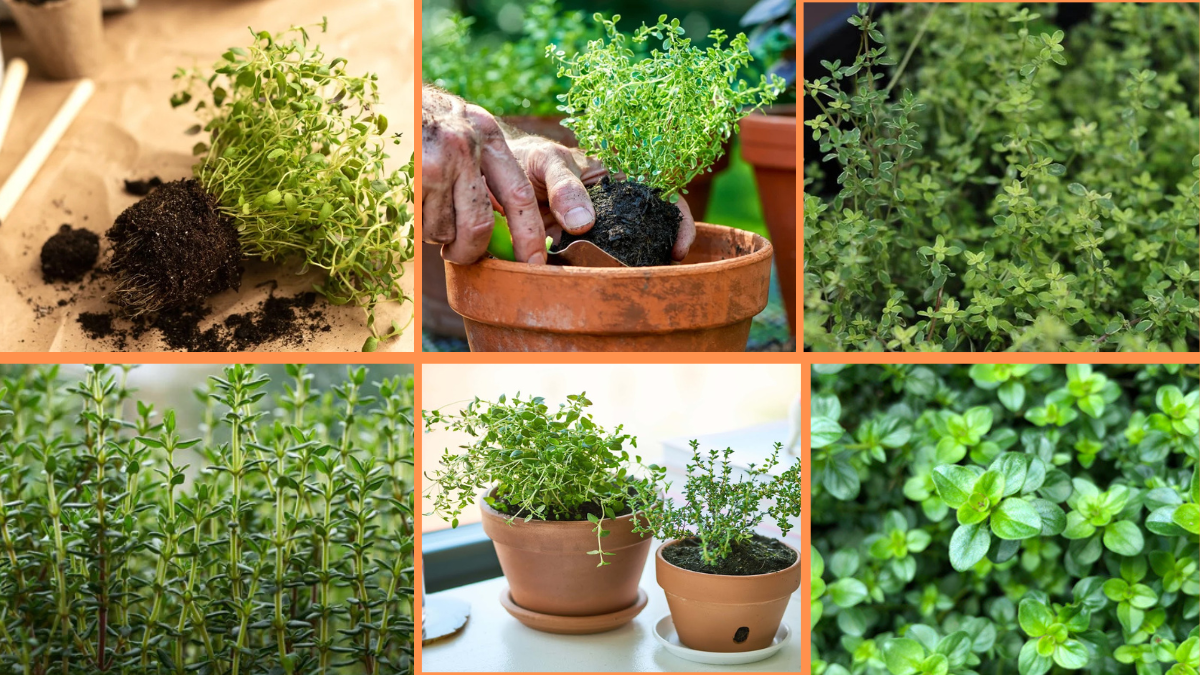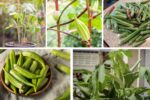If you’re looking for an aromatic, hardy, and versatile herb to grow in your garden or kitchen, thyme is one of the best choices you can make. Not only does thyme enhance a variety of dishes with its earthy, slightly minty flavor, but it’s also a beautiful, low-maintenance plant that thrives in both garden beds and containers.
Whether you’re a beginner gardener or a seasoned herb lover, thyme deserves a place in your home. In this detailed guide, we’ll walk you through everything you need to know about how to start growing thyme, including the best varieties, planting tips, care advice, harvesting methods, and ways to preserve your harvest.
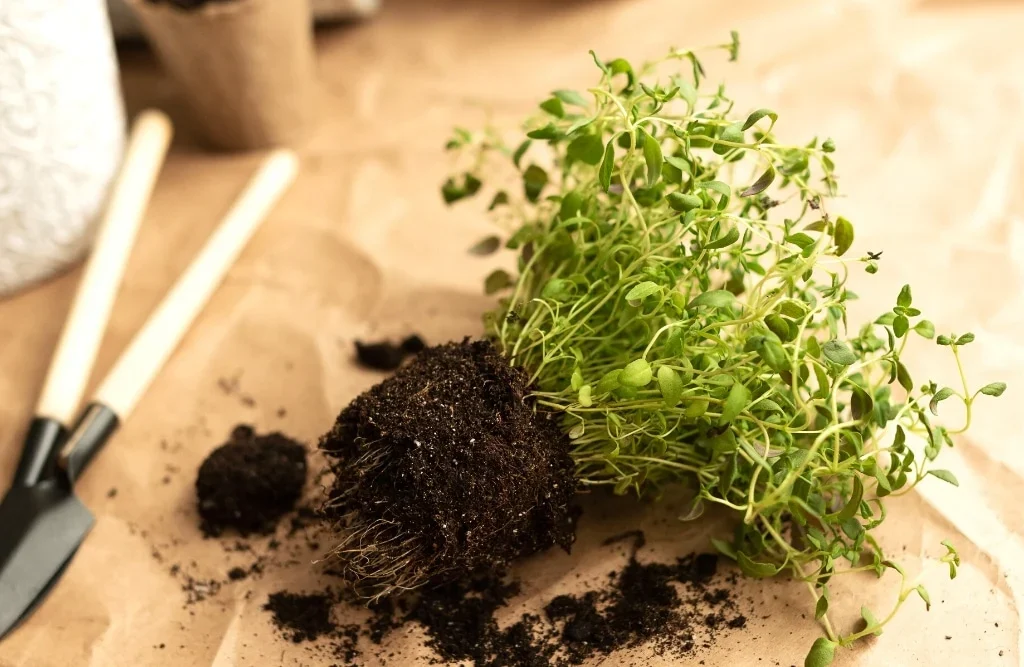
Why Grow Thyme?
Before diving into the growing process, let’s explore why thyme is such a valuable herb to cultivate:
- Highly aromatic and flavorful — a staple in Mediterranean, French, and Italian cuisines.
- Drought-tolerant and hardy — thrives in poor soils and full sun.
- Versatile in landscaping — works well as a ground cover, edging plant, or in rock gardens.
- Attracts pollinators — its tiny flowers lure bees and beneficial insects.
- Medicinal properties — traditionally used for respiratory issues, digestion, and immune support.
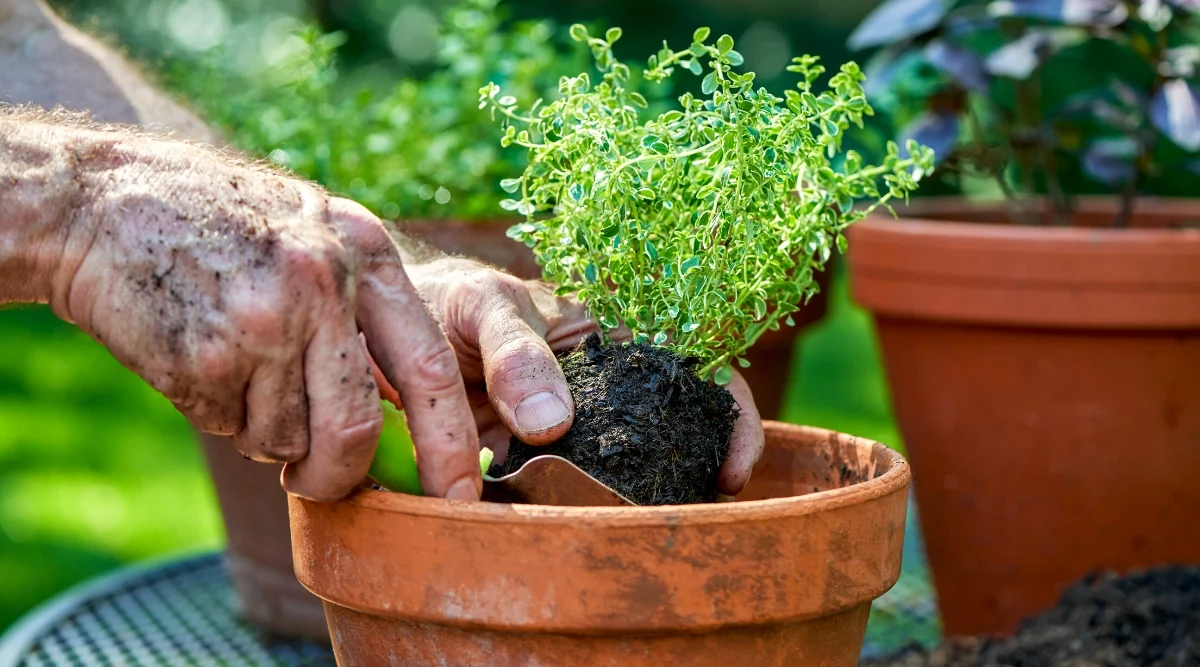
Popular Thyme Varieties to Grow
There are over 300 thyme varieties, but a few are especially well-suited for home gardens and kitchens:
1. Common Thyme (Thymus vulgaris)
- Classic culinary thyme.
- Small, gray-green leaves with pink or purple flowers.
- Robust, earthy flavor.
2. Lemon Thyme (Thymus × citriodorus)
- Delivers a citrusy aroma and flavor.
- Excellent for poultry, fish, and salad dressings.
- Attractive, variegated foliage in some varieties.
3. Creeping Thyme (Thymus serpyllum)
- Low-growing ground cover.
- Less potent for cooking but beautiful with purple blooms.
- Ideal for pathways and borders.
4. Caraway Thyme (Thymus herba-barona)
- Caraway-scented foliage.
- Often used in meat dishes.
- Hardy and attractive.
Choose your thyme variety based on whether you’ll primarily use it for cooking, ornamental purposes, or ground coverage.
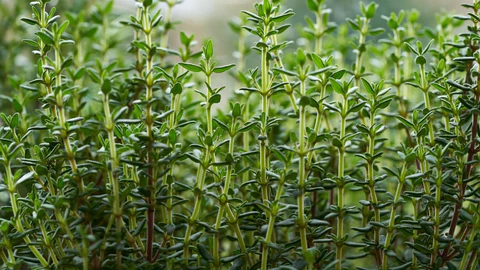
When and Where to Plant Thyme
Thyme is a sun-loving, hardy perennial that flourishes in warm, dry conditions.
Best Planting Times:
- Outdoors: After the last spring frost when soil warms up.
- Indoors: Year-round, provided it gets enough sunlight.
Ideal Growing Locations:
- Full sun — at least 6-8 hours of direct sunlight daily.
- Well-drained soil — sandy or rocky soils preferred.
- Containers — excellent for patios, windowsills, and balconies.
- Raised beds — prevent root rot in wet climates.
Avoid overly fertile or damp soil, which can reduce thyme’s flavor and lead to disease.
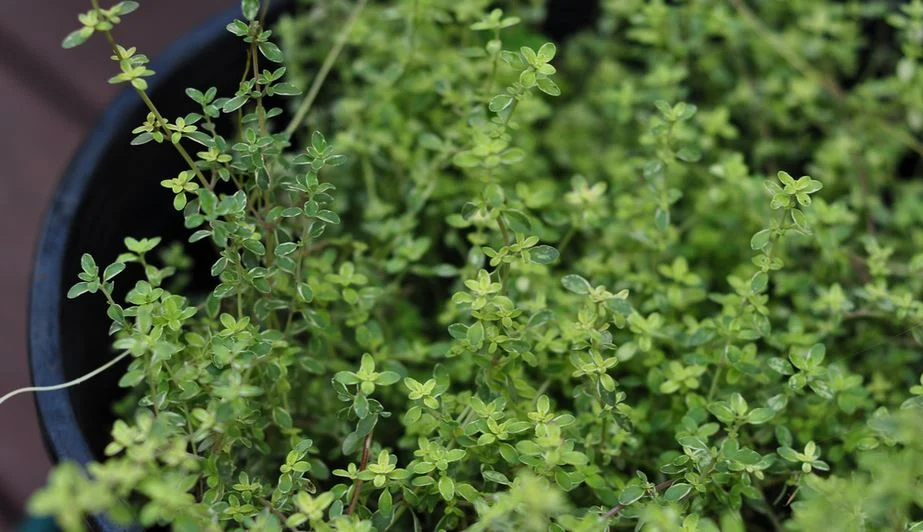
How to Plant Thyme
Starting from Seeds:
Thyme seeds can be slow and erratic in germination, but it’s doable with patience.
Steps:
- Sow seeds on the soil surface — they need light to germinate.
- Lightly press into the soil without covering them.
- Keep soil moist but not soggy.
- Provide warmth — around 65–75°F (18–24°C).
- Germination takes 2-4 weeks.
Once seedlings have several leaves, thin them out or transplant to larger containers or garden beds.
From Cuttings:
An easier and faster method is propagating thyme from cuttings.
Steps:
- Snip a 4-6 inch healthy stem from an established plant.
- Strip the leaves from the lower half.
- Place the cut end in water or plant directly into moist, well-draining soil.
- Roots will develop in 2-3 weeks.
From Nursery Plants:
Buying small thyme plants is the simplest option for beginners.
- Space plants 12-24 inches apart.
- Water thoroughly after planting.
- Mulch lightly to suppress weeds and retain soil warmth.
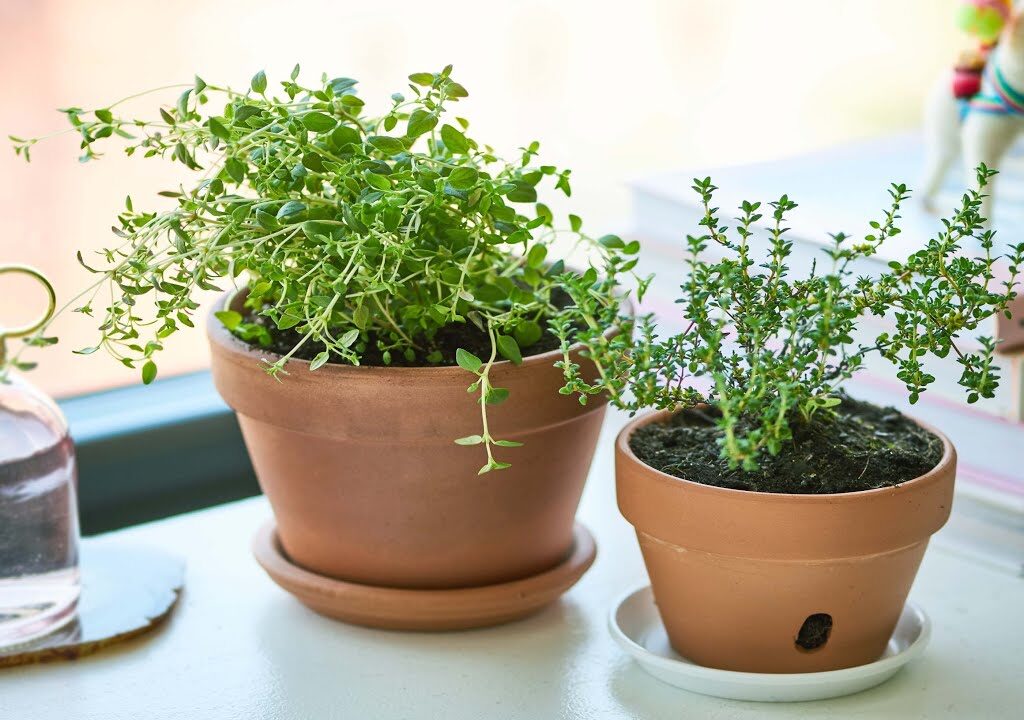
Ideal Soil and Light Conditions for Thyme
- Soil: Well-draining, sandy, or rocky soil with a pH of 6.0–8.0.
- Sunlight: Requires full sun — the more sunlight, the stronger the aroma and flavor.
- Water: Thyme is drought-tolerant. Water when the soil is completely dry, and avoid overwatering.
Thyme doesn’t need overly rich soil; in fact, too much fertility can cause leggy growth and dilute flavor.
Caring for Thyme
Thyme is one of the easiest herbs to care for, but a few simple practices will keep it thriving:
- Water sparingly — let the soil dry out between waterings.
- Prune regularly — trim stems to encourage bushy, compact growth.
- Divide clumps every 3-4 years to rejuvenate older plants.
- Fertilizing: Generally unnecessary; a light application of compost in early spring is sufficient.
- Mulch with gravel or small stones in wet climates to improve drainage.

Common Pests and Problems
Thyme’s aromatic oils naturally repel most pests, but occasional issues include:
- Aphids — hose them off with water or use insecticidal soap.
- Spider mites — increase humidity and spray affected leaves.
- Root rot — caused by poor drainage or overwatering.
Ensure your thyme grows in well-drained soil and avoid soggy conditions to prevent most problems.
Harvesting Thyme
When to Harvest:
- Begin harvesting once the plant reaches 6-8 inches tall.
- Best flavor is before flowering, typically in late spring or early summer.
Tip: Avoid harvesting more than one-third of the plant at a time to keep it healthy.
How to Harvest:
- Use sharp scissors or pruners.
- Snip stems just above a pair of leaves to encourage bushier regrowth.
- Frequent harvesting keeps thyme compact and productive.
How to Store and Preserve Thyme
Storing Fresh:
- Place fresh sprigs in a glass of water, cover loosely, and refrigerate.
- Wrap in a damp paper towel and store in a plastic bag for up to 10 days.
Drying:
- Tie stems into small bundles and hang them in a dark, dry, well-ventilated space.
- Once dry, strip leaves and store in airtight jars.
Dried thyme retains its flavor for up to 6 months.
Freezing:
- Chop leaves and freeze them in ice cube trays with a little water or olive oil.
- Use frozen cubes in soups, stews, and sauces.
Companion Planting with Thyme
Thyme is a natural companion for many vegetables and herbs.
Good companions:
- Cabbage
- Broccoli
- Strawberries
- Tomatoes
- Rosemary
- Sage
Benefits: Thyme deters cabbage worms and other pests while enhancing the growth of neighboring plants.
Growing Thyme Indoors
Thyme is an excellent indoor herb.
Tips for success:
- Place near a bright, south-facing window.
- Use well-draining, sandy soil in a pot with drainage holes.
- Allow soil to dry completely between waterings.
- Rotate the pot occasionally for even growth.
Pro Tips for Successful Thyme Growing
- Avoid wet feet: Ensure excellent drainage to prevent root rot.
- Don’t over-fertilize: Sparse soil conditions keep thyme’s oils concentrated and flavorful.
- Harvest often: Regular pruning boosts growth and intensifies aroma.
- Use gravel mulch in wetter climates for extra drainage.
- Grow multiple varieties for culinary and ornamental use.
Final Thoughts
Thyme is one of the most rewarding herbs for beginner and experienced gardeners alike. It’s tough, drought-resistant, and highly aromatic — perfect for both garden beds and containers. With a little sunlight, well-drained soil, and occasional pruning, you’ll enjoy an endless supply of fresh thyme for your kitchen and a beautiful, pollinator-friendly plant for your garden.
Start growing thyme today and bring a touch of Mediterranean magic to your home cooking and outdoor spaces!
